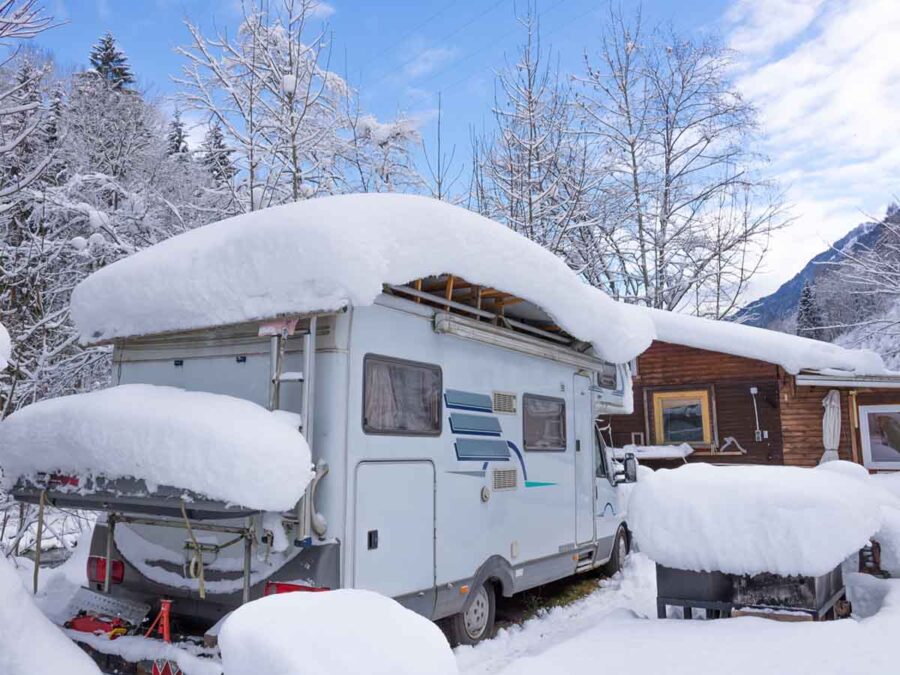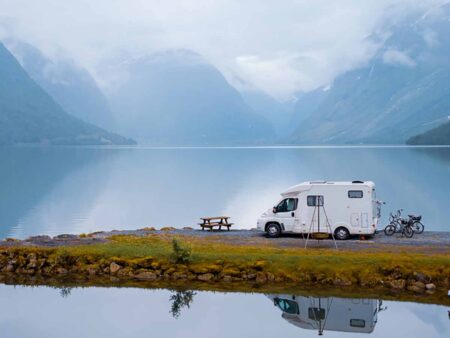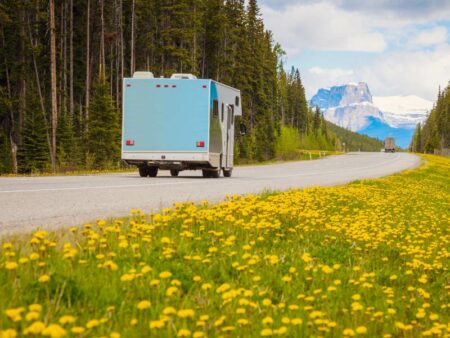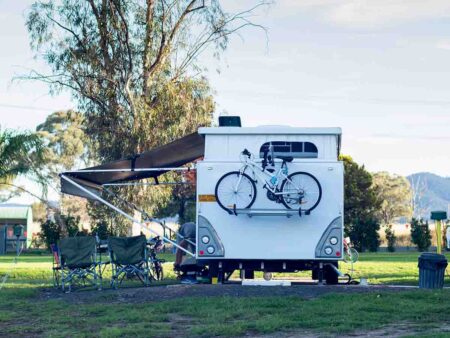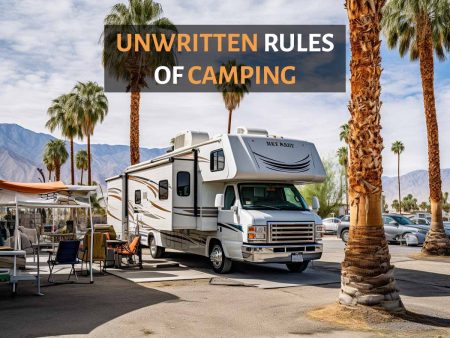The Snowy Mountain Range offers outstanding camping and hiking opportunities for novice and expert outdoor adventurers, but few people know anything about them.
The Snowy Mountain Range is 15 miles south of Lewistown, in central Montana, and consists of the Big Snowy and Little Snowy ranges, with most of the land within the Helena-Lewis and Clark National Forest.
To plan a camping trip to old Snowy Mountain, we provide this guide with details on what to expect, where to stay, what to see, the best time to visit, and more.
The Snowy Mountains offer abundant activities and incredible views. So, if you’re looking for a unique camping experience, stick around to learn more.
Snowy Mountain Terrain
Between the Big and Little Snowy Mountain ranges, you’ll experience a vast array of terrain and changes in elevation. For example, the south slopes of the range are semi-arid, while the northern slopes are more heavily forested.
The peak of Big Snowy Mountain sits at 8,682 feet, while the Little Snowy Mountain reaches 6,240 feet in height. The area offers distinct landscapes such as high plains, caves, meadows, waterfalls, and open grasslands that attract abundant wildlife.
Big Snowy Mountain has an uncommon summit line, with miles of meadow terrain similar to a tundra landscape. Part of the summit line includes the Knife Blade Ridge, a narrow, smooth stretch along the spine of the summit that makes this vista distinct.
The Little Snowy Mountain range terrain is less intense, with rolling slopes, many flat, grassy areas, and small creeks that often run dry in the summer. Pole Creek and Willow Creek are the two major waterways that drain into the Musselshell River to the south.
What to Expect When Camping at a Snowy Mountain
The first thing to note when planning Snowy Mountain camping is that the area is off the beaten path, with fewer visitors to interfere with a peaceful visit.
The location in central Montana, along with the fact most campsites are rustic and in dispersed locations, deters many RVers or tent campers from making this a destination camping vacation.
Most guests visit in July and August, but any time from mid-May through October will typically offer snow-free exploring, with higher elevations keeping some patchy snow banks until the heat of summer arrives.
The “Snowies,” as the locals call the range, attract more campers to Big Snowy Mountain who want to enjoy long hikes along the summit ridge. The ridge line is relatively level and will take you to Greathouse Peak, where you can see views of Yellowstone National Park and Canada on a clear day.
The unexpected caves at the west end of Big Snowy are another draw for curious visitors, with many still not on the map. Horseback riding is another top draw that brings guests to the area.
Another interesting thing to keep an eye out for when exploring the Snowy Mountains is the art and artifacts early visitors to the area have left behind. Native Americans have been living on the land for centuries. As time passed, the range’s lower slopes became the ideal location for a house on Snowy Mountain as homesteaders set up cattle ranches amongst the rich grasslands.
The Little Snowies have no developed sites, and both ranges have few roads accessing the interior.
Most of the Little Snowy Mountain area draws visitors who enjoy the dispersed camping locations, hunting opportunities, and encounters with various land formations and wildlife to view, study, or photograph.
Must-Do Activities When Camping Snowy Mountain
Any visit to the Snowy Mountains isn’t complete unless you visit these top attractions:
Visit Big Ice Cave
The Ice Cave features frozen walls, a super-refreshing treat when taking a tour during the hot summer months, as it keeps the interior about 40 degrees cooler than the temperature outside. As a result, the ice formations remain all year long and are a unique sight to behold.
You can reach the cave via the Ice Caves Loop Trail, which is 12 miles long and takes around 7-8 hours to complete.
The trail climbs five miles to the caves and can be rigorous, hence the intermediate to advanced hike rating. If you’re in poor physical condition, this trail is not one to take on, as the initial few miles are a consistent upward climb.
Once you clear the tree line and hit the summit ridge, the trail flattens out and is less strenuous, but more climbing is involved up and down from the Crest Trail to access the Ice Caves.
Exploring Backroads of Montana’s Pryor Mountains (Video)
Enjoy Crysta Lake
Sitting at 5,700 feet within the Big Snowy Mountain range, this 45-acre lake offers stunning views and great trails for walking, hiking, or riding on bicycles or horseback.
Stocked with fish, the lake is an excellent place to drop a line, launch a kayak, or take a dip.
The location offers picnic spots with a grill/fire ring, drinking water, vault toilets, a non-motorized boat launch, and a parking area.
Take in Fossil Viewing/Hunting
In the cuts from rivers flowing out of the Big Snowies for centuries, you can spy on many different types of fossils in the sedimentary rock formations.
The Morrison Formation is one of the most fruitful dinosaur fossil deposits in the world, with a portion of this feature in the Big Snowy Mountain range. The Bear Gulch Formation and the Madison limestone, creating the ribs of Big Snowy, are known for shark and other aquatic fossils.
You can register for a local fossil-hunting program for an in-depth look at these wonders or keep a close eye out as you hike through sedimentary rock formations.
Hike to Crystal Cascade Falls
An excellent day hike down the 7-mile round-trip Crystal Cascades Trail will take you away from Crystal Lake, following the banks of Rock Creek. The path climbs and meanders through the terrain until you come upon the stunning 100-foot-tall Crystal Cascade waterfall that flows from a cave above a rock cliff.
This intermediate hiking trail gains around 1,000 feet in elevation when heading to the falls. This path is well-marked and easy to follow, but remember, you’ll be expected to cross streams often, so wear the appropriate non-slip footwear.
We don’t recommend this trail for young children or anyone with mobility issues, as there are steep areas and random fallen trees or large boulders to get across. Long pants or leg gaiters are a good idea, as parts of the trail have thick, thorny brambles.
A lot of people I know consider this a must-do when camping in snowy mountains!
Take a Trail Ride on Horseback
If you aren’t bringing along horses on your camping trip to the Snowies, you can connect with a local outfitter who can arrange a trail ride so that you can experience the natural wonders of this area from a new perspective.
A short or long ride will let you experience a feeling of the old West and how early settlers navigated this region. Most trails are within the Lewis and Clark National Forest. Access the U.S. Forest Service maps from ranger stations or online.
Visit the Lewis and Clark Interpretive Center
The Lewis and Clark Interpretive Center will provide a great overview of the National Forest, local history, early settlers, regional terrain, flora and fauna, and information on the area’s trails and nearby attractions.
The center is open most days of the year, with hours of operation changing seasonally. You can learn more about the Snowy Mountain range, talk with rangers, participate in a class, and even pick up a few souvenirs at the facility.
3 Best Snowy Mountain Campgrounds
If you’re looking for the top campgrounds in or near Big Snowy or Little Snowy Mountains, the following locations are the ones to check out:
1. Crystal Lake Campground
Campsites: 28 for Tents or RVs up to 45 feet
Open for Camping: Early June through late October
Reservations: First-come, first-served
Nightly Fee: $20
Crystal Lake Campground sits below Mt. Harlow and offers trails that access the ice caves, Grandview Point, Devil’s Chute, Crystal Cascades, and the Crystal Lake loop, which is a relaxing stroll around the water’s edge. The lake is stocked with trout for fishing and is excellent for relaxing water sports like kayaking, canoeing, or floating on inflatable rafts.
Amenities:
- Potable water in warm months
- Vault toilets
- Boat launch (non-motorized only)
- Campsite fire ring/grill and picnic table
- Pets on leash welcome
Any motorized OHV must remain on campground roads, and no horses are allowed inside the campground.
There’s also one Snowy Mountain lodge or cabin to rent near the campground if you don’t have a recreational vehicle or tent camping gear.
Crystal Lake Campground (Video)
2. Kiwanis Club Campground
Want to Connect With a Community of Over 1,078 RV Enthusiasts?
Campsites: 28 for Tents or RVs – dry camping only
Open for Camping: Year-round, when accessible
Reservations: First-come, first-served
Nightly Fee: Free – but please leave a donation to help maintain the property
The Kiwanis Campground and Rest Area is an excellent choice for rustic RV parking or tent camping near the Snowy Mountains. The grassy “free-range” campsites are spacious, with clean restrooms and well-kept landscaping.
You can easily restock supplies at a small store across the street. There is a ten-day maximum limit per stay, but you can leave for 24 hours and return if a spot is available.
The location is right off the US HWY 191, next to a small airport, but the noise from the roadway or planes is minor.
Amenities:
- Water spigot available
- Restrooms with flush toilets
- Covered picnic areas
Kiwanis Club Campground (Video)
3. Timber Creek Dispersed Campground
Campsites: 4 Tent or RV sites – dry camping only, no hookups, water, or electric
Open for Camping: Year-round when accessible
Reservations: First-come, first-served
Nightly Fee: Free
The campsites at the Timber Creek Dispersed Campground are within the Lewis and Clark National Forest and are accessible down a mixed-use dirt road. Hauling in a large RV may cause issues, so stick to smaller motorhomes or trailers with good clearance.
The campsites are large and set next to the serene running water of Timber Creek in a wooded area with beautiful views in all directions. You can fish for your lunch or dinner from the creek and spend countless hours exploring the surrounding forest and open meadows by foot or bicycle or take a spin on your ATV on designated trails.
Amenities:
- Campfires allowed
- Some picnic tables and fire rings
- Vault toilet
Safety and Packing Tips for Camping Snowy Mountain
While this area is known for its abundant wild turkey population, it’s also home to black bears, grizzly bears, elk, moose, goats, bald and golden eagles, and more. Running into larger mammals, such as bears and elk, can make encounters dangerous or even deadly, especially during mating or birthing season.
Most camping regulations include proper food storage (see below) and packing all your supplies and trash in and out.
Food storage rules:
- Inside a hard-sided camper or horse trailer
- Inside a vehicle trunk
- Inside an approved bear-resistant container
- Suspended from trees – 10 feet above ground/4 feet minimum away from vertical support/trunk
Don’t forget to pack a wide-brim hat and sunscreen to combat the harsher sun at higher elevations, no matter what month you visit.
Carry a whistle, pepper spray, or other deterrents to distract any animal that appears aggressive. Otherwise, slowly back away and head in the opposite direction if you feel in danger.
Remember to keep your campsite as clean of debris and food as possible. If you can’t store food in a safe container close to your RV or tent, hang the items 100 yards from your campsite to deter animal attacks. Also, quickly wash up items after cooking/eating to remove scents that may draw animals near.
Snowy Mountain Camping Wrap-Up
If you want a more serene camping getaway, far from crowded hiking trails and natural wonders, give the Snowy Mountains in Montana a try. With affordable camping rates at the Crystal Lake campground, you’ll be in the heart of the scenery and activities.
If you love free boondock campsites when you RV, tent camp, or car camp, there are numerous dispersed or semi-rustic campsites inside and outside the National Forest lands.
With thousands of acres of unspoiled landscape to explore at Big and Little Snowy Mountain, you’ll have a memorable camping experience unlike any other!
"Man cannot discover new oceans unless he has the courage to lose sight of the shore."
-- Andre Gide

